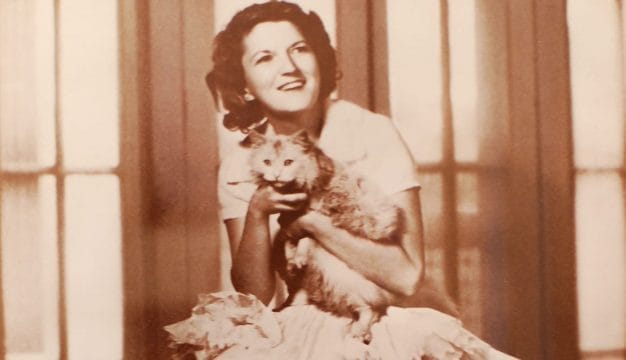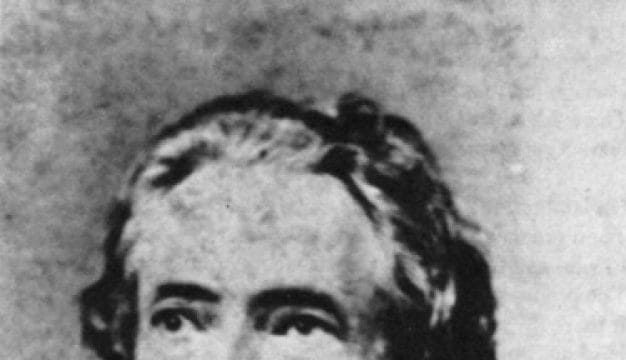Bill Traylor
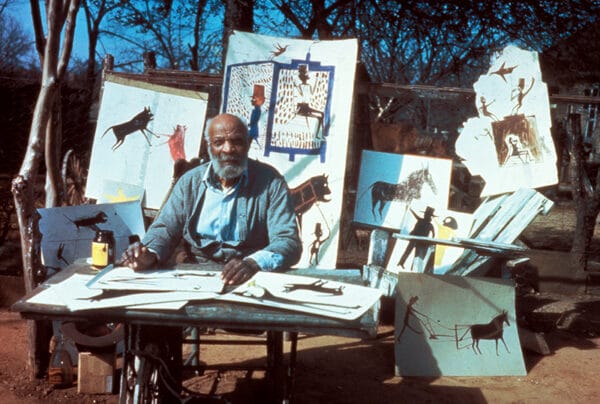 Bill Traylor
The visual artwork of native Alabamian Bill Traylor (1854-1949) is as distinctive and original as was his art studio. Traylor is one of a number of famous artists throughout history who did not attend formal art classes. His works reflect his surroundings in bold imagery and striking colors and often feature human figures and animals.
Bill Traylor
The visual artwork of native Alabamian Bill Traylor (1854-1949) is as distinctive and original as was his art studio. Traylor is one of a number of famous artists throughout history who did not attend formal art classes. His works reflect his surroundings in bold imagery and striking colors and often feature human figures and animals.
Bill Traylor was born sometime in 1854 to Sally and Bill Traylor, enslaved workers on a plantation in Lowndes County. Having no means to gain a formal education, Traylor earned his living by sharecropping on a plantation in Montgomery County.
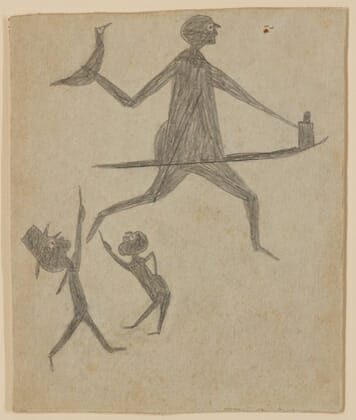 Exciting Events
He was married to Lorisa Dunklin, and the couple had at least nine children, although few records of his life and family at this time exist. By 1933, Traylor was working in a shoe factory in Montgomery. Although little record of when Traylor began painting and drawing has been found, documentation suggests that he set up his studio in 1939 on a sidewalk on Lawrence Street in Montgomery. His work soon attracted the attention of artist Charles Shannon, one of the founders of the New South cooperative community of artists. The following year, the gallery mounted a showing of Traylor’s drawings. In 1941, his work was shown at the Fieldston School in New York City. In 1942, Traylor left Alabama to live with his children in Detroit during World War II, returning to Montgomery after the war. In 1946, journalist Allen Rankin authored a story about him, “He Lost 10,000 Years,” that was published in Collier’s Magazine in 1946. Bill Traylor died in Montgomery on October 23, 1949.
Exciting Events
He was married to Lorisa Dunklin, and the couple had at least nine children, although few records of his life and family at this time exist. By 1933, Traylor was working in a shoe factory in Montgomery. Although little record of when Traylor began painting and drawing has been found, documentation suggests that he set up his studio in 1939 on a sidewalk on Lawrence Street in Montgomery. His work soon attracted the attention of artist Charles Shannon, one of the founders of the New South cooperative community of artists. The following year, the gallery mounted a showing of Traylor’s drawings. In 1941, his work was shown at the Fieldston School in New York City. In 1942, Traylor left Alabama to live with his children in Detroit during World War II, returning to Montgomery after the war. In 1946, journalist Allen Rankin authored a story about him, “He Lost 10,000 Years,” that was published in Collier’s Magazine in 1946. Bill Traylor died in Montgomery on October 23, 1949.
The Art of Bill Traylor
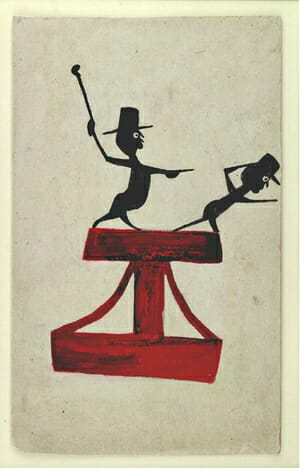 Figures, Construction
Traylor created most of his more than 1,000 drawings with pencil (although he did use charcoal on occasion) on thin cardboard; he also used watercolors. His images are very distinctive. They tend to be bold, flat, and very expressive and take the form of humans, animals, fantastical creatures, and architectural forms that do not overlap on the picture plane. Traylor drew from what he saw as an adult and remembered from his earlier life experiences for his subjects: a dog and cat fighting, people constructing a building, a woman with a bird, a man and a woman. His compositions are sophisticated, using the positive space (the figures) and the negative space (the background) to convey movement, emotion, physical location, and narrative. Traylor’s works are held in important public and private collections, and he is recognized as an important twentieth-century American artist.
Figures, Construction
Traylor created most of his more than 1,000 drawings with pencil (although he did use charcoal on occasion) on thin cardboard; he also used watercolors. His images are very distinctive. They tend to be bold, flat, and very expressive and take the form of humans, animals, fantastical creatures, and architectural forms that do not overlap on the picture plane. Traylor drew from what he saw as an adult and remembered from his earlier life experiences for his subjects: a dog and cat fighting, people constructing a building, a woman with a bird, a man and a woman. His compositions are sophisticated, using the positive space (the figures) and the negative space (the background) to convey movement, emotion, physical location, and narrative. Traylor’s works are held in important public and private collections, and he is recognized as an important twentieth-century American artist.
Further Reading
- Lyons, Mary E., and Bill Traylor. Deep Blues: Bill Traylor, Self-Taught Artist. New York: Scribner’s, 1994.
- Maresca, Frank, and Roger Ricco. Bill Traylor: His Art, His Life. New York: Knopf, 1991.
- Traylor, Bill, et al. Bill Traylor Drawings: From the Collection of Joseph H. Wilkinson and an Anonymous Chicago Collector. Chicago: Chicago Office of Fine Arts, 1988.
